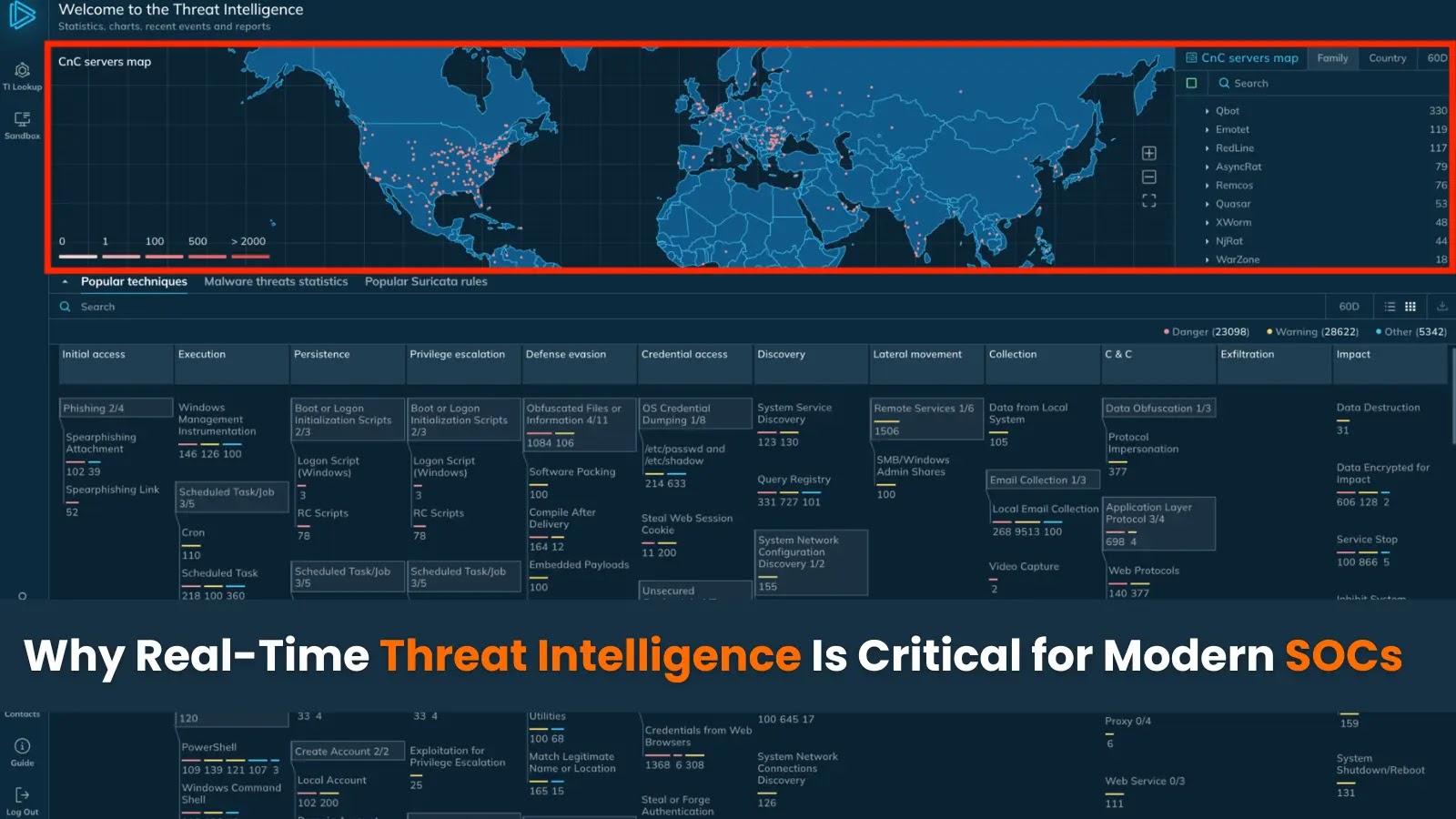
Why Real-Time Threat Intelligence Is Critical for Modern SOCs
The digital threat landscape is unforgiving. Security Operations Centers (SOCs) find themselves perpetually on the defensive, tasked with identifying and neutralizing cyber threats before they inflict systemic damage. Modern adversaries, armed with sophisticated automation, targeted ransomware, and elusive zero-day exploits, skillfully leverage any delay in threat visibility. The fallout of delayed detection ranges from severe operational disruption and significant financial losses to irreparable reputational damage for organizations worldwide.
Recent high-profile cyber incidents underscore this critical need. Consider the devastating impact of supply chain attacks or the pervasive nature of ransomware campaigns – these events highlight a clear truth: reactive cybersecurity is no longer sufficient. To effectively counter these evolving threats, SOCs must transition from a reactive stance to a proactive, real-time defense posture. This shift is powered by real-time threat intelligence.
The Proliferation of Automated and Targeted Attacks
Today’s threat actors operate with unprecedented speed and precision. Traditional signature-based detection methods, while still valuable, are increasingly outpaced by polymorphic malware and sophisticated evasive techniques. Automated attack frameworks can scan vast networks for vulnerabilities within minutes, while targeted ransomware campaigns can disable critical infrastructure in hours. This rapid execution demands an equally rapid response, something unattainable without immediate, contextual threat data.
For instance, an attacker might exploit a vulnerability like CVE-2023-38831 in WinRAR to gain initial access, then quickly pivot using automated scripts. Without real-time intelligence on IOCs (Indicators of Compromise) associated with such exploits and the subsequent attacker behavior, SOCs are left scrambling.
Zero-Day Exploits: The Ultimate Blind Spot
Zero-day exploits represent a significant challenge because they leverage previously unknown vulnerabilities. By definition, security solutions lack signatures or rules to detect them. The discovery of a zero-day can lead to widespread compromise before patches become available. Real-time threat intelligence, however, provides a crucial advantage.
While direct detection of a zero-day is difficult, real-time intelligence can identify suspicious behaviors, network anomalies, or unusual outbound communications linked to the exploit’s post-compromise activities. 예를 들어, a sudden surge in encrypted traffic to an unknown command-and-control server, even if the initial exploit is new, could be flagged and investigated immediately. This behavioral analysis, informed by continuous threat feeds, reduces the window of opportunity for attackers.
The Imperative of Proactive Threat Detection
Proactive threat detection is no longer a luxury; it is a fundamental requirement for operational resilience. Real-time threat intelligence feeds SOC analysts with crucial context:
- Indicators of Compromise (IOCs): Up-to-the-minute IP addresses, domains, file hashes, and URLs associated with active threats.
- Tactics, Techniques, and Procedures (TTPs): Insight into how adversaries operate, allowing SOCs to anticipate attacks.
- Threat Actor Profiles: Understanding the motivations, capabilities, and common targets of specific threat groups.
- Vulnerability Intelligence: Early warnings about newly discovered vulnerabilities and their potential exploitation in the wild, such as CVE-2024-21338 in Microsoft Exchange.
This intelligence allows SOC teams to hunt for threats proactively rather than just react to alerts. It enables them to fine-tune detection rules, block malicious traffic at the perimeter, and prepare incident response plans before an attack fully materializes.
Remediation Actions for Enhancing Real-Time Intelligence
To bolster their real-time threat intelligence capabilities, SOCs should focus on several key areas:
- Integrate Diverse Threat Feeds: Combine commercial, open-source, and industry-specific intelligence sources. Prioritize feeds known for their timeliness and relevance to your sector.
- Automate Intelligence Consumption: Utilize SOAR (Security Orchestration, Automation, and Response) platforms to automatically ingest, parse, and act upon threat intelligence data. This reduces manual overhead and accelerates response.
- Contextualize Intelligence: Don’t just consume raw IOCs. Integrate threat intelligence with internal log data, asset inventories, and vulnerability assessment results to understand its applicability to your specific environment.
- Develop Threat Hunting Programs: Empower SOC analysts with tailored intelligence to actively search for hidden threats within the network, moving beyond alert-driven responses.
- Participate in Information Sharing Groups: Engage with ISACs (Information Sharing and Analysis Centers) and other industry peer groups to share and receive actionable intelligence on emerging threats.
- Regularly Validate Intelligence: Continuously evaluate the effectiveness and accuracy of your threat intelligence sources. Remove stale or low-fidelity feeds to maintain signal over noise.
Conclusion
The operational pressures on modern SOCs are intensifying, driven by the speed and sophistication of cyber adversaries. Real-time threat intelligence is not merely an optional enhancement; it is an indispensable component of a resilient cybersecurity strategy. By proactively integrating, automating, and acting upon timely threat information, SOCs can significantly improve their ability to detect, mitigate, and respond to threats before they inflict severe damage. This proactive stance transforms the SOC from a reactive incident handler into a strategic defense hub, safeguarding critical assets and ensuring business continuity.





